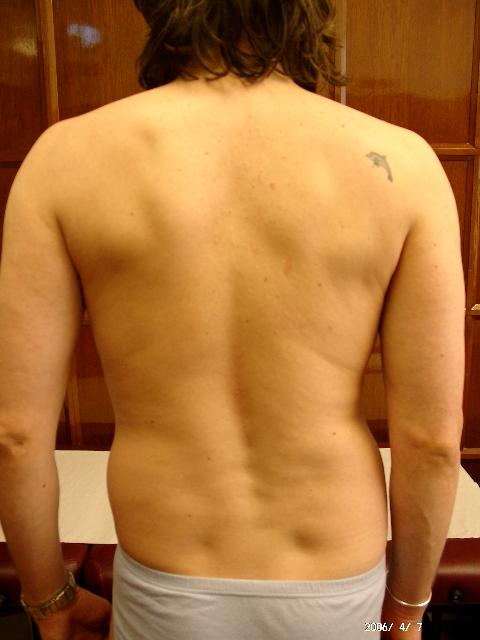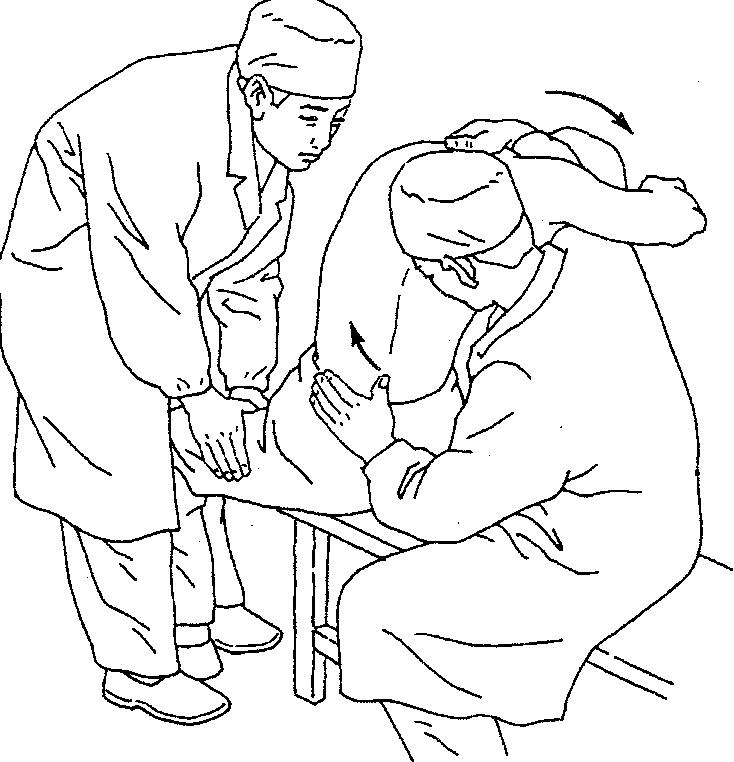Main points of diagnosis:
 1) Most patients have a history of chronic injury in the lumbar region.
1) Most patients have a history of chronic injury in the lumbar region.
2) The symptoms and signs include lumbago with pains radiating to the lower extremity or with pains and numbness in both lower extremities.
3) Exacerbation of the pains in increasing the abdominal pressure, or coughing and so on.
4) Tenderness and radiating pains about the interspinal region; pathological deviation of two or three spinous processes; cord-like, stripping and sliding sensation with tenderness in the supraspinal ligaments above and below the affected vertebrae; unequal widths of the interspinal spaces above and blow the affected vertebrae.
5) Positive straight-leg-raising and intensive straight-leg-raising tests.
6) Positive results of supine-position abdomen-raising test, Queckenstedt’ test, neck-raising and chest-pressing tests.
7) Attenuated myodynamia on the affected side in toe dorsal extension test, hyperalgesia at early stage and hypoalgeia afterwards.
8) Lumbar muscle spasm, deformity and limited activity of the spine.
9) X-ray signs: scoliosis, loss of lordosis, narrowed intervertebral space, hyperplasia of vertebral edge and so on.
10) CT or MRI signs: clear findings of the site, size and shape of the intervertebral disc hernia and the displacement or compression of the nerve root and the durra mater cyst.
Treatment principle:
1) For acute cases: Restore and treat injured soft tissues and reduce dislocation of joints.2) For chronic cases: Promote the circulation of Qi and blood, regulate the balance of the back muscle, tonic the kidney to strengthen the back.
Postoperative management:
 After the manipulation at the acute stage, the patient should take a bed rest, avoid off-bed exercises as much as possible, and continue the acupuncture and TuiNa.
After the manipulation at the acute stage, the patient should take a bed rest, avoid off-bed exercises as much as possible, and continue the acupuncture and TuiNa.